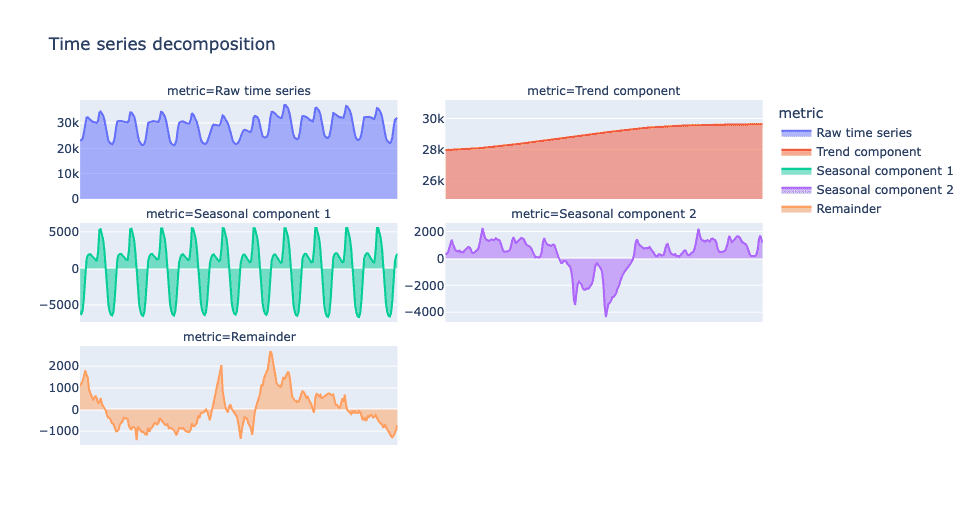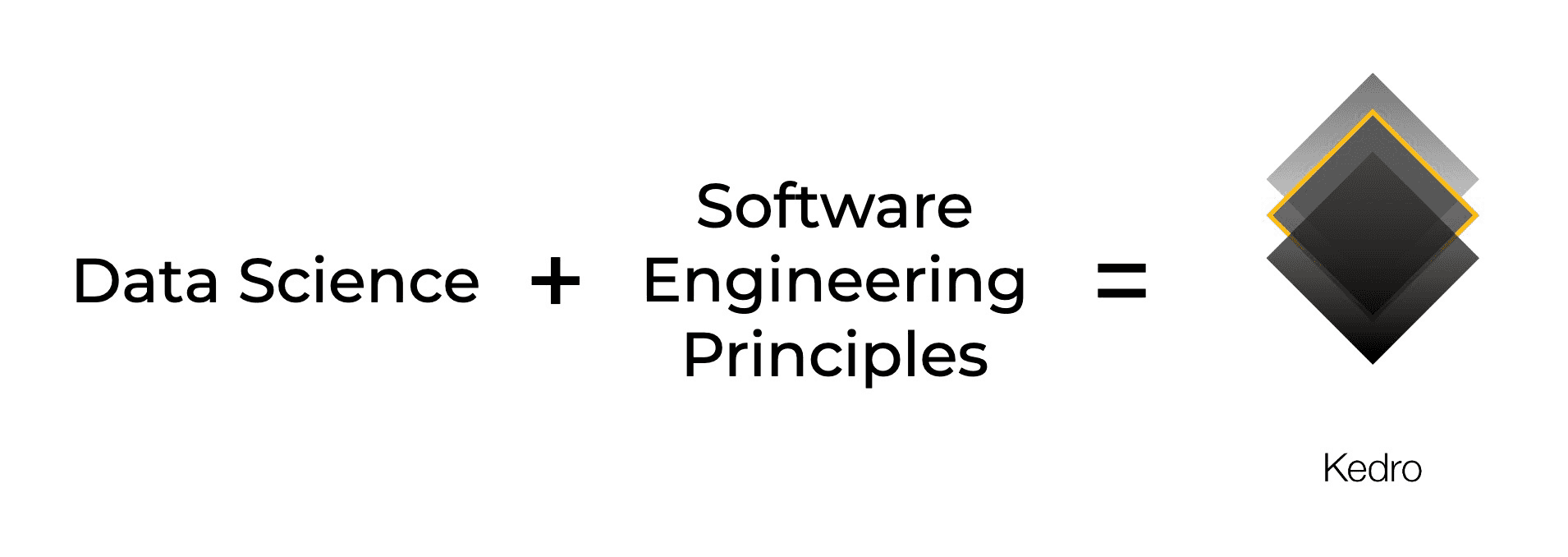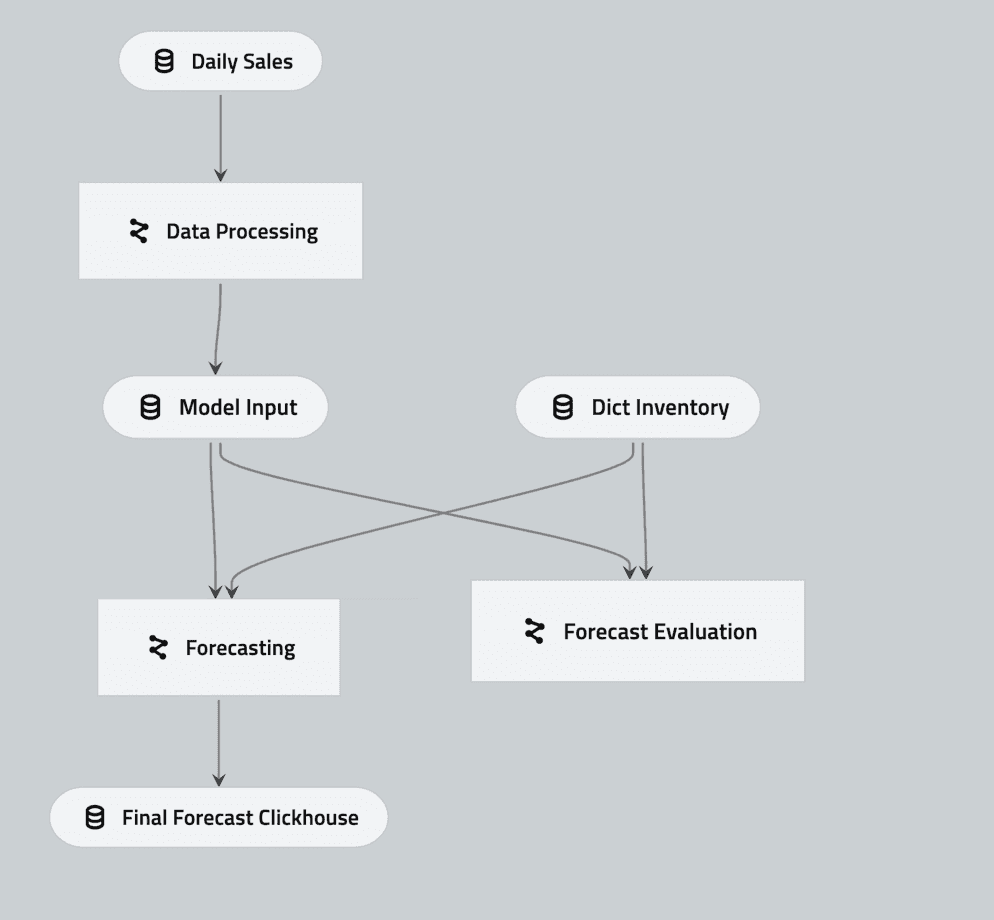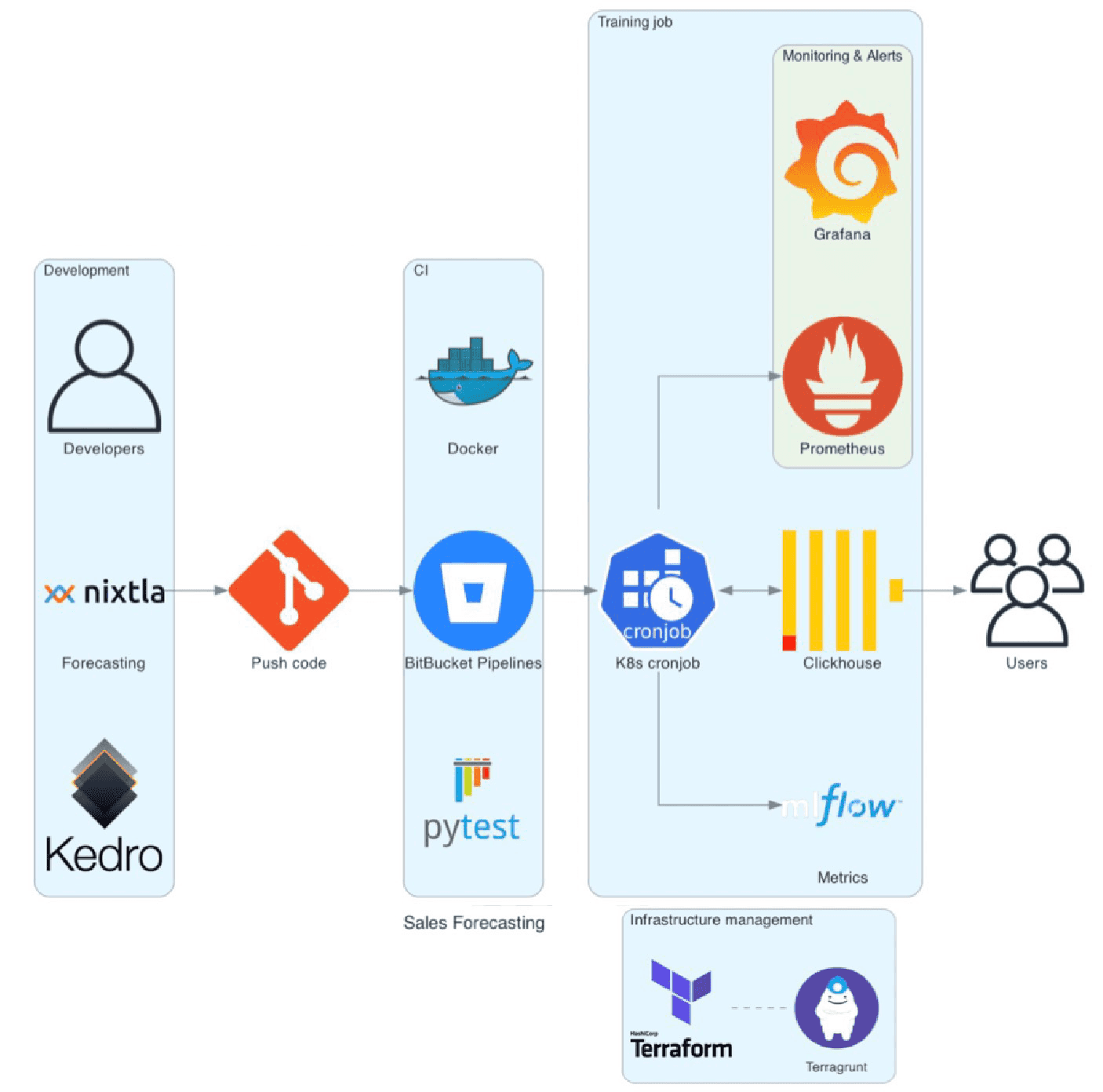Towards better Data Analytics - Google Cloud Bootcamp
“Without data, you are another person with an opinion” These words from Edward Deming, a management guru, are the best definition of what means to…
Read moreSales forecasting is a critical aspect of any business, especially in the fast-paced and competitive world of e-commerce. Accurately predicting future sales trends helps organizations make informed decisions about resource allocation, inventory management, and strategic planning. By anticipating customer demand and market trends, businesses can ensure that they are well-positioned to meet the needs of their customers and stay ahead of the competition.
In the e-commerce industry, sales forecasting is particularly important as it can have a direct impact on the bottom line. Poor forecasting can result in overstocking, which can lead to increased storage costs and potentially result in markdowns or waste. On the other hand, understocking can lead to stockouts and lost sales opportunities. By using advanced forecasting techniques, businesses can optimize their operations and maximize their profits.
In short, accurate forecasting helps e-commerce businesses:
Forecasting can be hard for several reasons:
Uncertainty:
The future is inherently uncertain and unpredictable. There are many factors that can impact future trends and patterns, such as economic conditions, consumer behavior, supply chain disruptions, or natural disasters, to name a few. This makes it difficult to predict future outcomes with complete accuracy.
Complexity:
Forecasting sales is a challenging task due to the complexity of the variables involved. One of the factors that contribute to the complexity is the presence of multiple variables that impact sales, such as customer demand, competition, pricing, and economic conditions. These variables are often interdependent, and changes in one variable can have a ripple effect on others, making it difficult to predict sales faithfully.
Seasonality:
Sales of many products and services can be highly seasonal, with demand fluctuating throughout the year. Predicting sales accurately requires accounting for seasonal trends and understanding how they can affect sales patterns.

Overall, forecasting sales is a complex and challenging task that requires careful consideration of multiple factors and a deep understanding of the market and consumer behavior.
This is where machine learning comes in, as it has the ability to process vast amounts of data, recognize intricate patterns, and produce predictions that are not only more precise but also reliable. It's important to note that while machine learning can be a powerful tool for sales forecasting, there is no such thing as a "free lunch." In other words, ML is not a silver bullet that can solve all problems on its own. It is still necessary to carefully consider the data and assumptions used to train the model and be aware of them when interpreting the results.
In addition, the process of putting machine learning solutions into production can present novel challenges, including:
Deployment and Integration:
Deploying a machine learning model in production can be complex, as it often involves integrating the model with existing systems and workflows. There can be technical challenges associated with this, such as data compatibility issues, infrastructure limitations, and deployment configuration.
Monitoring and Maintenance:
To ensure that the ML model continues producing accurate results over time, monitoring its performance and updating it as needed is important. This can involve ongoing maintenance and troubleshooting, as well as retraining the model as new data becomes available.
Data Drift:
Over time, the data used to train a ML model can become outdated or irrelevant, which can lead to a phenomenon known as "data drift." Data drift can cause the model's performance to degrade over time, as it is no longer able to accurately represent the underlying patterns in the data. It is important to monitor for data drift and update the model as necessary to ensure that it continues to produce accurate results.
Addressing these challenges requires a combination of technical expertise, careful planning, and continuous monitoring and improvement. By understanding the potential challenges and proactively addressing them, organizations can increase the chances of success in implementing machine learning solutions in production.
Nixtla, an open-source library, simplifies the time series forecasting process. With its fast, scalable, and user-friendly API implementation, Nixtla offers a range of libraries, including:

Successful machine learning projects require experimentation, and Nixtla facilitates this by promoting consistency among libraries. With Nixtla, users can experiment with different models more easily. Moreover, Nixtla can be seamlessly integrated with Kedro, making it a versatile and powerful tool for developing ML workflows.
As machine learning becomes an increasingly important tool for organizations looking to drive business value, the challenge of developing high-quality machine learning solutions has never been greater. This is where tools like Kedro come in, providing a framework for managing the end-to-end machine learning development process and helping to ensure that these solutions are both effective and efficient.

Kedro is an open-source tool that provides a structured framework for machine learning development. It introduces the machine learning pipeline concept, which helps to increase the reproducibility of machine learning models and speeds up time-to-market. Additionally, Kedro conforms to software engineering best practices, making it easier to build and deploy machine learning models.
One of the key advantages of Kedro is its portability, making it easy to deploy machine learning models on any cloud provider infrastructure. This provides organizations with greater flexibility and avoids vendor lock-ins.
As e-commerce continues to grow rapidly, businesses face increasing pressure to stay ahead of the competition and drive profitable growth. Dema has developed a groundbreaking platform that provides businesses with real-time insights into key areas such as marketing campaigns, customer behaviour, inventory, orders, and website performance. By leveraging the power of data, Dema’s platform enables companies to make data-driven decisions that can significantly transform their commercial operations. By empowering businesses with actionable insights, Dema's platform offers a powerful tool for staying ahead of the competition and achieving significant gains in revenue, customer retention, and overall profitability.We collaborated with Dema to implement new functionality for their platform - a scalable and robust sales forecasting solution. By leveraging our expertise in machine learning and analytics, we’ve created a powerful tool that allows e-commerce businesses to accurately predict future sales trends, optimize their inventory, and allocate resources more effectively. With this new functionality, businesses can gain a competitive edge and achieve significant gains in revenue, customer retention, and overall profitability.
At GetInData, we've had the privilege of working with dema.ai to successfully implement a cutting-edge forecasting solution. With our expertise in real-world large scale Big Data scenarios, we were able to provide dema.ai with architectural guidance and navigate the project from the PoC phase to a productionized version in less than two months.

Our team built time series models using Nixtla and Kedro pipelines. We worked diligently to ensure that the machine-learning solution was implemented seamlessly. The results were impressive, with our predictions performing substantially better than the benchmarks.
Based on our analysis and expertise, we have developed the following solution architecture that we believe meets the needs of our client:

Fully automated, daily predictions were run as cron jobs in Kubernetes, which allowed for an extremely fast and scalable solution, leveraging scale-to-zero approach to keep control of the total costs of the pipeline. We used monitoring and alerting based on Prometheus and Grafana to maintain the desired service levels. Business-level metrics were captured in the MLflow to give full end-to-end visibility on the daily behaviour of models and predictions.
We're proud to have been a part of dema.ai's journey and are excited to continue working with them to ensure that their data & ML solutions remain ahead of the curve.
In this blog post, we highlight the success of a recent project that involved time series forecasting for an e-commerce platform. We were able to take a sales forecasting prototype and bring it to production in less than 2 months! We have made this impressive timeline possible through the use of innovative technologies and a highly efficient development process. Drawing upon our team’s extensive experience in applying machine learning across a diverse range of industries, we can help you leverage the power of machine learning to achieve your business goals. If you're interested in learning more about this project or how your business can benefit from similar solutions, we invite you to get in touch with our team. Our experts are always available to provide information and support tailored to your needs.
Interested in ML and MLOps solutions? How to improve ML processes and scale project deliverability? Watch our MLOps demo and sign up for a free consultation.
“Without data, you are another person with an opinion” These words from Edward Deming, a management guru, are the best definition of what means to…
Read moreIn this blogpost series, we share takeaways from selected topics presented during the Big Data Tech Warsaw Summit ‘24. In the first part, which you…
Read moreDynamoDB is a fully-managed NoSQL key-value database which delivers single-digit performance at any scale. However, to achieve this kind of…
Read moreIn today's digital age, data reigns supreme as the lifeblood of organizations across industries. From enabling informed decision-making to driving…
Read moreWhat is CICD? It is an acronym for Continuous Integration Continuous Delivery / Deployment. CICD can be also described as the methodology focused on…
Read moreAirflow is a commonly used orchestrator that helps you schedule, run and monitor all kinds of workflows. Thanks to Python, it offers lots of freedom…
Read moreTogether, we will select the best Big Data solutions for your organization and build a project that will have a real impact on your organization.
What did you find most impressive about GetInData?